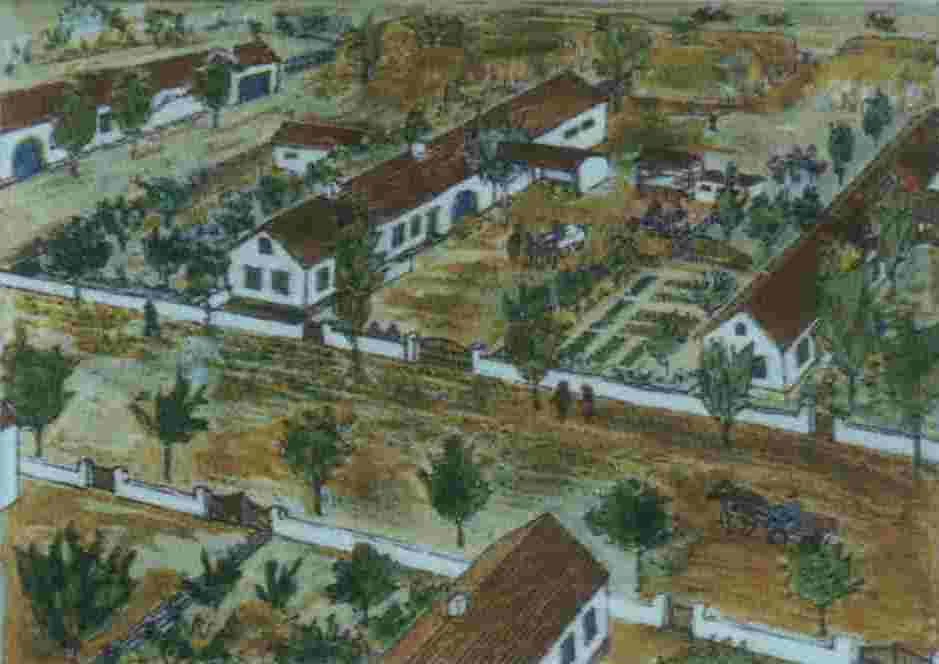In 1814 and 1815, 133 Roman Catholic and Evangelical Lutheran families from Oroschokowin (Ortschokowin) and Chitonitz, Poland, founded a village in the Kogelnick Valley, approximately 60 U.S. miles west of Odessa Ukraine and 6 miles south of Tarutino, Ukraine. (map coordinates: 46 minutes, 7 seconds North and 29 minutes, 15 seconds West).
In the fall of 1813 approximately 90 of these families, mostly Roman Catholic, spent the winter in a colonists camp at Kishinev, Ukraine (now Moldovia/Moldowa). In the spring of 1814 this group moved to the present site of Krasnoe, Ukraine.
In the fall of 1814 another group of approximately 43 families, many Evangelical Lutheran, spent the winter in a colonist camp at Bender, Ukraine (now Moldovia/Moldowa). In the spring of 1815 this group joined the 90 families at the site of Krasna.
From 1814 to July 1817 this village was called Catholic Colony or Kogielnik Colony. The Russian department of Foreign Settlers then named it Constantinovsky Constantinschutz. In 1819 the Russian Crown officially named the village Krasninsky/Krasna, in commemoration of a battle between Napoleon and his army and the Russian Army at Krasnaja, a small village near Sluzk Russia.
The name Krasna though has been used by local villagers from November 1817, as evidenced by a birth and baptism book for the Roman Catholic Church in Krasna. In 1918 after World War 1, when Bessarabia was ceded to Romania by Russia, the name of the village was known as Crasna.
Krasna/Crasna was the name which remained in use until 1940-1941, when the Ukranian version Krasnoe came into use. In September/October 1940 at the time of the Resettlement all of the approximately 1,900 Germans who were residents there, elected to imiigrate Germany. They boarded ships at Galatz, Ukraine and were taken upstream on the Danube River to resettlement camps in Austria, before being dispersed to the farms in the Warthau/Warthegau region of east Poland.
In August 1824 the residents of Krasna petitioned the Department of Foreign Settlers to allow 19 Evangelical Lutheran families to move from Krasna to Katzbach, Bessarabia.
These families were those of Jacob Buchert, Christian Sept, Johann Sisle, Thomas Burkhard, Jacob Stock, Johann Riddlebach, Jakob Sisle, Michael Matulatus, Christopher Busch, George Sisle, Jakob Schlop, Johann Koller, Heinrich Riedel, Johannes Waldbauer, Johannes Grabowski, Jakob Rauser, Karl Menke and Bernhard Wagner.
The main reason for this move was that some of the religious holidays of these two religious groups were observed on different days and also differently.. The move was completed by July 1825. The Roman Catholic families of Krasna helped these families dismantle their houses and provided wagons to transport the materials. Until the 1940 Resettlement Krasna remained the only German village in Bessarabia inhabited almost exclusively by members of the Roman Catholic faith.
Emigration by Krasna residents, in search for their own farmland, was evidenced by the establishment of the daughter colonies Emmental, Bessarabia, Russia and Karamurat, Dobrudscha, Romania, in the latter 19th Century. Immigration to areas in Saskatchewan Canada, North Dakota USA, Argentina and Brazil began in 1894 and concluded circa 1914.



